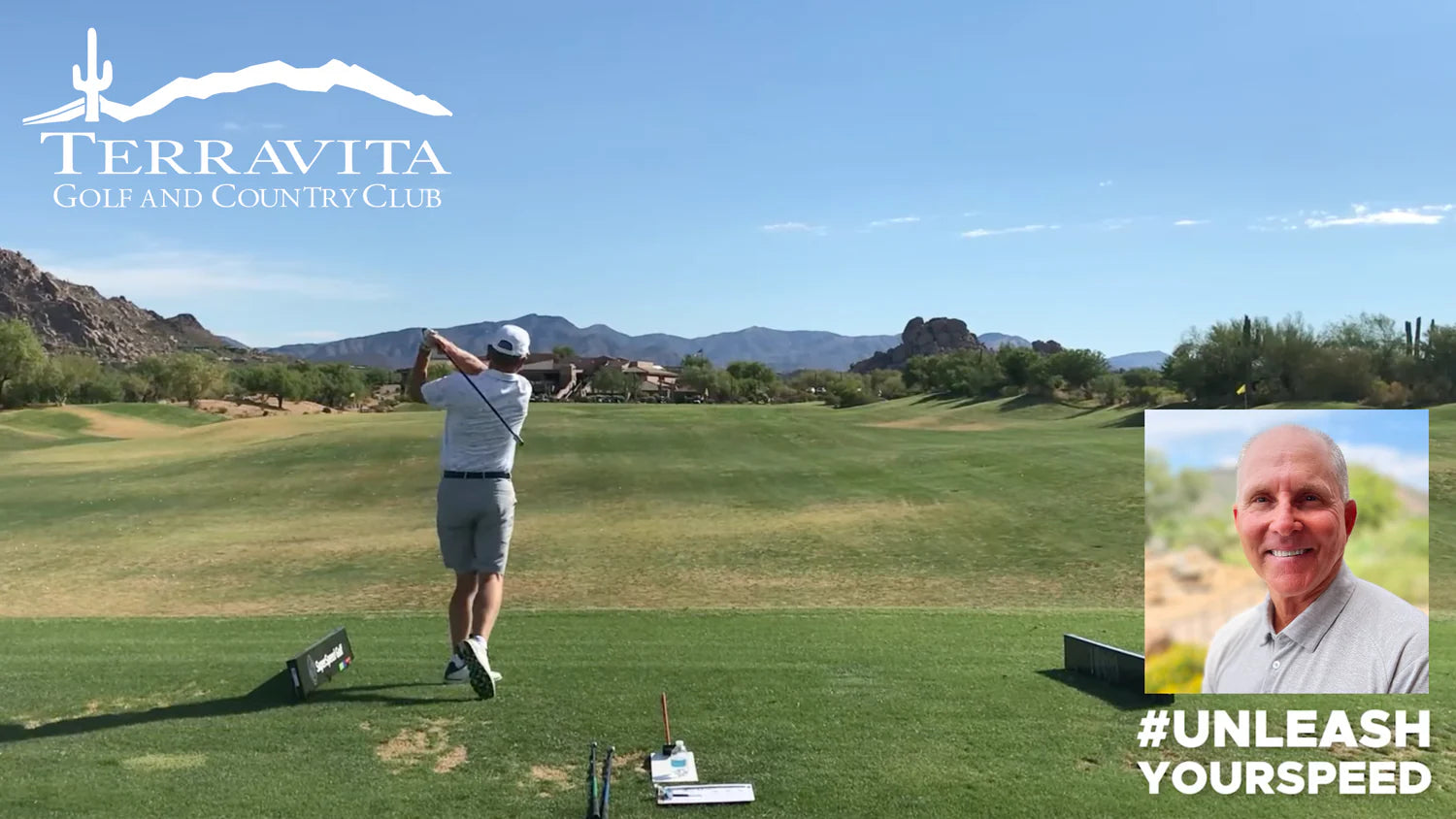
Senior Golf SuperSpeed Case study with Ron Gring, Golf Magazine Top 100 Instructor
Sep 30, 2022
47 Senior Golfers under the instruction of Ron Gring at Terravita Golf & Country Club in Arizona participated in a 6 week speed training group class utilizing the SuperSpeed Golf overspeed training set and the PRGR Launch Monitor.
Average age of the participants was 70.3 with a youngest of 58 and an oldest of 89. Swing speed increases were seen in all 47 of the participants
Ron explains his group training details here.
“Overall, my goal was to continue to encourage, motivate and inspire the belief that faster club head speeds were possible even at an age where most golfers are suffering significant distance loss.
With that as an objective, every week, there were five segments in a SuperSpeed Training Session.
Part 1) Once a week with all 3 groups, I created highlights of the previous week performances. Percentage increases, personal bests…really any breakthrough was recognized by the group, either with SuperSpeed Sticks or with the Driver. I also included technique adjustments with the SuperSpeed training clubs that might help increase speeds.
Part 2) The dynamic warmup, which frankly, most considered to be a full body workout. Ironically, after the first two weeks, the feedback from the participants was that they looked forward to the warmup as much as they did the speed training.
Part 3) Next, each player made 5 full speed driver swings on FlightScope with Strike Spray. I would record all five swings on video for analysis after the SuperSpeed session. I also would write in the data from each of the 5 swings on the golfer’s individual worksheet.
Part 4) Players would pair up and go through their SuperSpeed training protocols, based on their training Level, 1, 2, or 3. We provided PRGR launch monitors for each twosome. One player would swing while the other recorded the results on that player’s worksheet. This helped to guarantee enough rest between sets to optimize the training and the training results.
Part 5) Upon completion of the Level 1, 2 or 3 SuperSpeed protocol, players would end their session with 5 full speed golf shots with their personal driver and Strike Spray. Again, I would record the swings on video for analysis after the SuperSpeed session. I also would write in the data from each of the 5 swings on the golfer’s individual worksheet.
For the other 2 required sessions per week, I produced individual worksheets for each player and asked them to record their results. The players would return those to me. I plugged them into their personal “locker” (file). Next, I printed “permanent” sheets for them to keep.
Before beginning Level 1 Training I provided each player a personal binder to keep track of their progress, along with pictures and articles from SuperSpeed and other sources describing the training process involved with increasing speed. Even though it was a bit, “Old School” these became an integral part of the experience for our members, while they were putting in the effort and tracking the results. I would often hear them talking about a breakthrough in speeds that they never thought were possible.”
The Results
Swing speed increases were seen in all 47 of the participants, the smallest gain was 0.5 mph, and the largest was 13 mph. The average gains were 4.1 mph for the males and 4 mph for the females. This led to increases of just over 5% (p<0.001) during the training. There was no correlation between age and club head speed gains (r=-0.036, p=0.810), showing that age did not affect how much speed these golfers gained during the training. There was also no difference in gains by gender, as both genders equally gained swing speed (p=0.938).
Charts below show the pre and post driver speeds grouped by gender and also a table looking at the group averages for males, females and combined (all participants).


← Older Post Newer Post →

 Australian Based Store
Australian Based Store